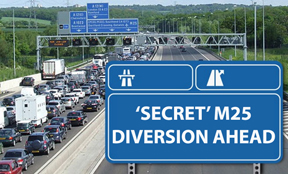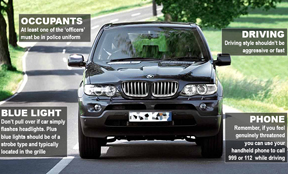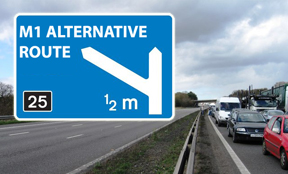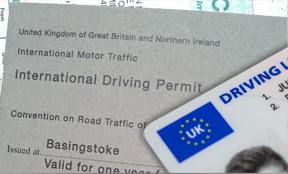
If you live near a school, town centre, football ground, or other busy area, it’s likely that, as a resident and a driver, you find yourself having to negotiate dangerous and inconsiderate parking.
However, reporting it and ensuring that the area is properly policed can seem like a thankless task, with confusion over who needs to be contacted to enforce the rules.
Here, we’ve curated a guide to help residents and drivers ensure that the right authority is contacted and that action is taken to improve safety for both drivers and pedestrians.
-
TABLE OF CONTENTS
-
What is the problem with bad or illegal parking?
-
Who is responsible for enforcing yellow line restrictions?
-
How can I get yellow lines enforced?
-
Is pavement parking illegal?
-
Find a contact to report illegal or dangerous parking where you live
-
When and how to contact the police
-
Can I request more parking restrictions in my area?
-
Our verdict
 This dangerous and selfish parking is near a
school - forcing kids to emerge onto a busy road from behind cars that are blocking their view. (Photo
by Pete Barden)
This dangerous and selfish parking is near a
school - forcing kids to emerge onto a busy road from behind cars that are blocking their view. (Photo
by Pete Barden)
What is the problem with bad or illegal parking?
Parking on yellow lines, especially in high-traffic areas, can create dangerous situations for drivers and pedestrians. Illegal parking can:
- Obstruct visibility at junctions, making it difficult for drivers to see approaching traffic.
- Block access for emergency vehicles, potentially delaying crucial services.
- Force pedestrians, including children near schools and the elderly, to walk in the road.
- Cause congestion and increase the risk of accidents.
Who is responsible for enforcing yellow line restrictions?
The responsibility for enforcing yellow line parking restrictions varies depending on the location:
- Local councils: Most parking enforcement in the UK is handled by local councils through Civil Enforcement Officers (CEOs). They issue Penalty Charge Notices (PCNs) for violations.
- The police: In some areas where civil enforcement has not been decriminalised, the police may still be responsible for enforcing parking rules, particularly when vehicles are causing an obstruction.
- Highways agencies: Some major roads and red routes are managed by National Highways or Transport for London (TfL) and have their own enforcement teams.
How can I get yellow lines enforced?
If you frequently see parking violations on yellow lines in your area, follow these steps to report and help get the rules enforced:
- Identify the correct authority: Contact your local council to determine if they handle parking enforcement or if the police should be informed.
- Gather evidence: Take clear photos or videos showing the offending vehicles, including their number plates, time, and location.
- Report through official channels: Many councils have online forms or dedicated phone numbers for reporting illegal parking. If the issue is severe, you may also contact your local councillor to push for increased enforcement.
- Consider community reporting apps: Some areas have community-based reporting apps, such as FixMyStreet, where residents can highlight parking issues.
Is pavement parking illegal?
Pavement parking rules vary depending on where you are in the UK:
- London: Pavement parking is banned across all London boroughs unless explicitly permitted.
- Elsewhere in England: There is no general ban, but parking on the pavement is illegal if it causes an obstruction. The government has been considering a nationwide ban, but no legislation has been passed yet.
- Scotland: A new law banning pavement parking is expected to be enforced from 2024.
- Wales: Local authorities have been given more powers to enforce against pavement parking, but rules vary by area.
Find a contact to report illegal or dangerous parking where you live
If you need to report illegal parking, here are some key links:
- Find your local council: Find your local council with this handy tool
- Report to the police (non-emergency): Call 101 or use your local police force’s online reporting system.
- Transport for London (Red Route violations): You can report issues on London's Red Routes here.
When and how to contact the police
While most yellow line parking enforcement is handled by local councils, there are situations where the police should be contacted:
- If a vehicle is causing an obstruction: For example, if a car is blocking a driveway, fire exit, or pedestrian crossing.
- If a vehicle is dangerously parked: This includes parking on a blind bend or close to a school entrance where it endangers children.
- If a vehicle is abandoned: If a car appears abandoned and is causing a hazard, report the abandoned vehicle to the police and your local council here.
Can I request more parking restrictions in my area?
If parking problems persist, you may be able to request additional restrictions, such as:
- Extending existing yellow lines: If you believe the current markings don’t cover a problematic area, contact your local council’s highways department.
- Introducing resident parking zones: In some cases, councils may implement parking permits to reduce commuter parking in residential areas.
- Installing bollards or barriers: To prevent pavement parking, councils may consider physical measures to restrict access to pedestrian areas.
Our verdict
Reporting illegal parking on yellow lines might seem frustrating, but taking the right steps can lead to better enforcement and improved safety.
By contacting the correct authority, providing evidence, and staying persistent, residents and considerate drivers can help ensure their local areas remain safe and accessible for all road users.
If you’re experiencing ongoing problems, consider raising the issue with your local councillor to push for stronger action.
Subscribe for free motoring and travel news here - support independent journalism
Most read motoring content
Take a look at more of our top motoring-related content here...
-
How to spot a fake undercover police car
-
Do I need to pay the Dartford Crossing charge on Sundays?
-
Will I get a speeding ticket after being flashed
-
Do I need an international driving permit for France and Spain
-
Secret parking offences you're committing revealed
-
Alternative routes for beating jams on the M25
-
Alternative routes for the M1 motorway
-
Alternative routes for the M6 motorway
-
How old are my tyres - find out instantly here
-
What are the black dots on my windscreen for?
-
Are my sunglasses legal for driving?
Author: Pete Barden:
Twitter: @pete_barden
Pete Barden is a qualified journalist who has written and produced for publications including The Sun (thesun.co.uk), New Statesman Media Group, Whatcar? (Whatcar.com) Stuff Magazine (Stuff.tv), Fastcar Magazine (Fastcar.co.uk), Maxim Magazine and UK broadcast stations within the Heart network (Formerly GCAP). Pete specialises in motoring and travel content, along with news and production roles. You can find out more about Pete Barden on LinkedIn.











